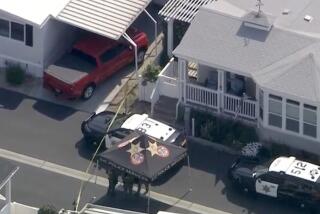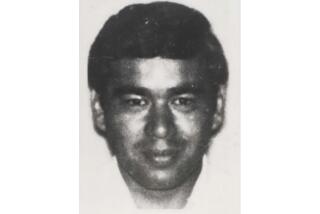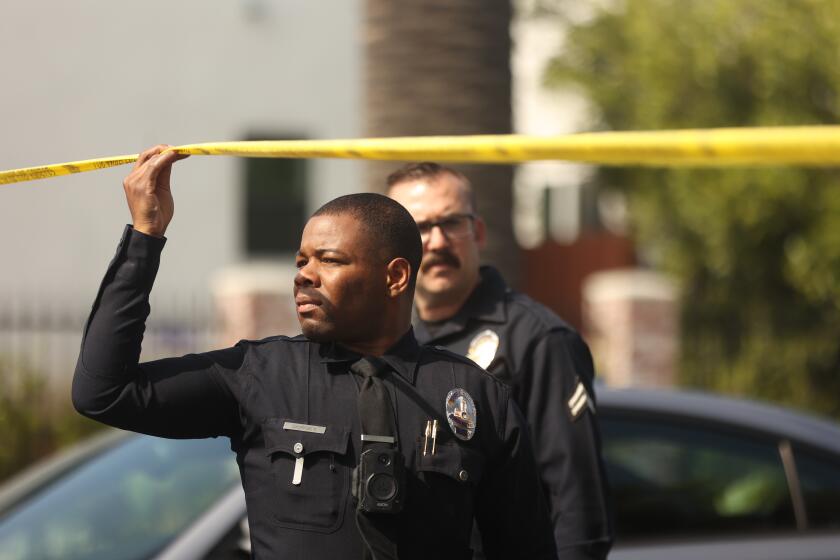Slain bandit linked to couples’ slayings
- Share via
DENVER — A reclusive bandit who fatally shot a New Mexico sheriff’s deputy last week has been identified as a man linked to the killings of two separate couples, one in Canada in 1972 and one in California in 2004.
Joseph Henry Burgess, 62, was killed in the July 16 shootout with Sandoval County deputies who were hunting the so-called cookie bandit, a figure who had plagued the remote mountains of western New Mexico for years, breaking into vacation cabins and stealing food and supplies.
True-crime aficionados have speculated that Burgess could be linked to as many as 10 slayings of couples camped in the Western wilderness over the last decade.
Burgess stormed into a cabin where deputies had set up a surveillance operation and killed 46-year-old Joe Harris. Burgess died in the exchange of gunfire with Harris and the deputy’s partner.
New Mexico authorities this week identified the shooter as Burgess, a former cult member and draft evader whom British Columbia authorities identified as the killer of a couple who had camped on a Vancouver Island beach in 1972.
Burgess, a New Jersey native, had fled to Canada after failing to report for induction to the Army. He moved into a religious commune but was asked to leave after members became nervous about the .22 rifle he was fond of carrying.
Burgess told locals he didn’t approve of young, unmarried Christian couples spending time together. Canadian authorities said he shot one pair, a 20-year-old Canadian woman and a 19-year-old Swedish exchange student, as they camped on a beach. Then he apparently fled the country.
In 2004, a young couple who had just finished working in a Christian camp in the Sierra foothills were found shot to death in their campsite outside the Northern California coastal town of Jenner. Canadian authorities heard about the case and contacted Sonoma County sheriff’s investigators to tell them about the similarities.
On Tuesday, as more than 1,000 people gathered for Harris’ funeral in New Mexico, Sonoma County authorities said they would travel to the state to see if Burgess left evidence that could definitively link him to the killings of Lindsay Cutshall, 22, and Jason Allen, 26.
Capt. Matt McCaffrey said the agency was waiting until after the funeral to send detectives. “We’re letting them deal with their grief first,” McCaffrey said. “Who knows what we’ll find down there.”
At a minimum, McCaffrey said, his investigators can compare Burgess’ DNA to evidence gathered from the crime scene outside Jenner.
People in the Jemez Mountains who ran across Burgess before the shootout said the drifter seemed to be well established in the region and was a regular nuisance.
Owners of cabins in the area set up surveillance cameras and sent e-mail alerts whenever their homes were burglarized. They told reporters that Burgess apparently lived in the region even when it was buried under heavy snow.
Peter Olson, a spokesman for New Mexico State Police, said Burgess seemed to have relied on a series of camps and may have endured winters by staying in the cabins he burglarized. There were no signs yet that Burgess had left the area recently. “It seems as if he’s been in the Jemez Mountains for the past 11-12 years,” Olson said.
--
More to Read
Sign up for Essential California
The most important California stories and recommendations in your inbox every morning.
You may occasionally receive promotional content from the Los Angeles Times.













